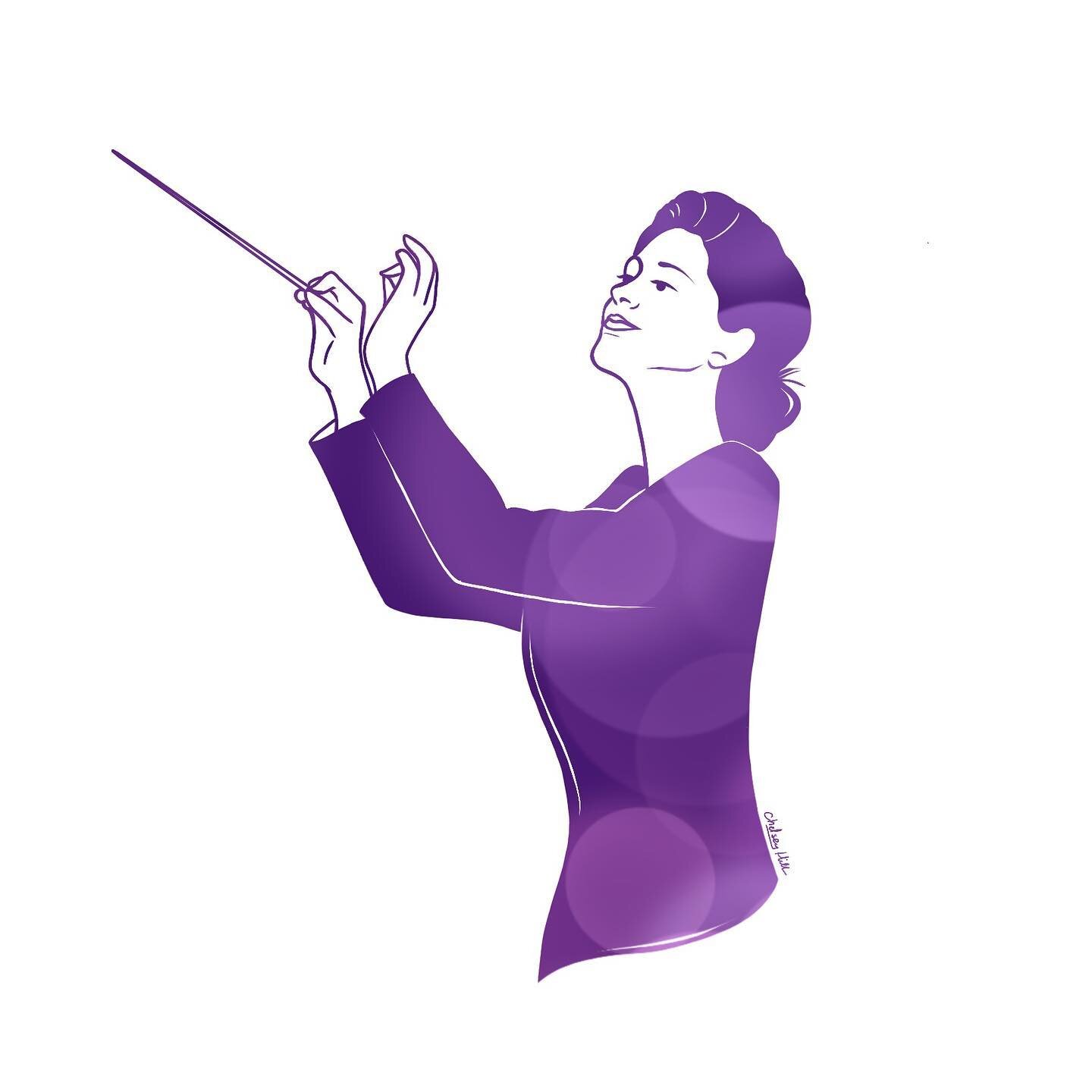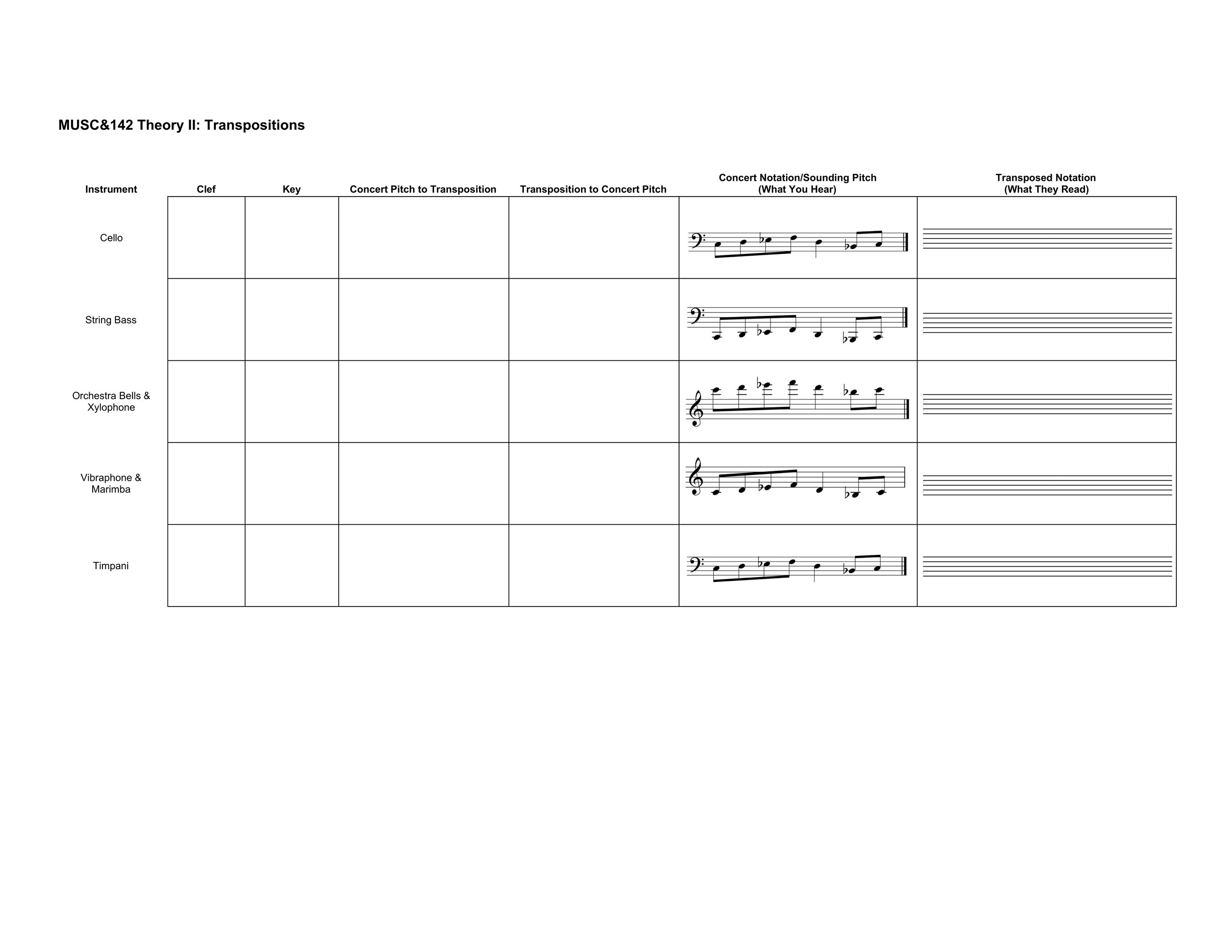TRANSPOSITION
TRANSPOSITION is the act of taking a line of music and rewriting it in a way that retains all of its rhythmic, melodic, and harmonic attributes - just in a different key. This is important in music for modulating music into different keys but especially important when communicating from instrument to instrument.
NOT ALL INSTRUMENTS ARE PITCHED IN C - meaning: not all instruments produce the sound of the note “C” when the player plays the “C” on the instrument. Here is how it works …
TRANSPOSITIONS EXPLAINED
Take the Flute and Clarinet. When held up next to each other, they are approximately the same length. This might lead you to believe they would produce the same pitch on each instrument. However, the clarinet has a slightly wider bore (inside if the instrument), making the instrument somewhat larger in general and therefore, produce a lower pitch.
The soprano Clarinet is a lower-pitched instrument than the soprano Flute. When both a Flute and a Clarinet play their note “C” - two different pitches are sounded on the instruments: the Flute sounds a true “C” while the Clarinet sounds a “B♭”. The “B♭” is a whole step lower than “C” so the soprano Clarinet is pitched a whole-step lower than the Flute … and we clarify that by calling it the B-Flat Clarinet.
The Clarinet has a different sounding pitch than what it reads and fingers. In order for the B-Flat Clarinet to compensate for being a whole step too low, it must read and play notes a whole step too high in order for the sounding pitch to be the same as the Flute’s. This is where TRANSPOSITION comes in. Since we know that the B-Flat Clarinet must read a whole step above C instruments to compensate for its instrument sounding a whole step too low, we can therefore transpose all music meant to be played by the B-Flat Clarinet up a whole step from music composed at the piano or on any other “C” instrument.
If you find yourself reading B-Flat Clarinet music and want to be able to play it on the Piano, Flute, or any other NON-TRANSPOSING INSTRUMENT (and instrument that sounds a “C” when it plays a “C”), you would simply follow the directions in reverse and play the B-Flat Clarinet music a whole step down to achieve the sounding pitch.
Gustavo Dudamel, LA Phil Conductor and Classical Music Bad A$$
Human voices are all Non-Transposing which means they will sing the exact note they see and vice versa. The one exception is that in choral music, the Tenor voice will be written in Treble clef with an 8ba attached, indicating the notes should be sung down one octave from written. Knowing how to transpose will make you a better musician (you can play or sing any music put in front of you), a better music friend (you can play along with or help out your friends who play in different transpositions than you), and if you get really good at Transpositions, you can become a Conductor - and read, interpret, and conduct transposed lines of music all day every day.
Still confused?
Here’s a pretty great recap video:
Download the Transposition Chart PDF or JPEG from the bottom of this webpage or our Canvas Module and follow along as we record the correct transpositions for the most prevalent band and orchestra instruments.
WHAT IS “THE LICK” AND WHY ARE YOU MAKING US TRANSPOSE IT?
“The Lick” is a short musical idea that is found all over pop and classical music. I selected this as our transposition motif because it gives you a chance to work with accidentals, stepwise, and leapwise motion. For more on “The Lick,” enjoy the following YouTube black holes …
WOODWINDS
PICCOLO
CLEF: Treble
KEY: C
CONCERT PITCH TO TRANSPOSITION: Down one Octave
TRANSPOSITION TO CONCERT PITCH: Up one Octave
FLUTE & OBOE
CLEF: Treble
KEY: C
CONCERT PITCH TO TRANSPOSITION: As Written
TRANSPOSITION TO CONCERT PITCH: As Written
BASSOON
CLEF: Bass
KEY: C
CONCERT PITCH TO TRANSPOSITION: As Written
TRANSPOSITION TO CONCERT PITCH: As Written
*If working with the contrabassoon, it sounds one octave below written.
E-FLAT CLARINET
CLEF: Treble
KEY: E-Flat
CONCERT PITCH TO TRANSPOSITION: Down a m3
TRANSPOSITION TO CONCERT PITCH: Up a m3
B-FLAT CLARINET
CLEF: Treble
KEY: B-Flat
CONCERT PITCH TO TRANSPOSITION: Up a M2
TRANSPOSITION TO CONCERT PITCH: Down a M2
BASS CLARINET
CLEF: Treble
KEY: B-Flat
CONCERT PITCH TO TRANSPOSITION: Up a M9
TRANSPOSITION TO CONCERT PITCH: Down a M9
SOPRANO SAXOPHONE
CLEF: Treble
KEY: B-Flat
CONCERT PITCH TO TRANSPOSITION: Up a M2
TRANSPOSITION TO CONCERT PITCH: Down a M2
ALTO SAXOPHONE
CLEF: Treble
KEY: E-Flat
CONCERT PITCH TO TRANSPOSITION: Up a M6
TRANSPOSITION TO CONCERT PITCH: Down a M6
TENOR SAXOPHONE
CLEF: Treble
KEY: B-Flat
CONCERT PITCH TO TRANSPOSITION: Up a M9
TRANSPOSITION TO CONCERT PITCH: Down a M9
BARITONE SAXOPHONE
CLEF: Treble
KEY: E-Flat
CONCERT PITCH TO TRANSPOSITION: Up an Octave+M6
TRANSPOSITION TO CONCERT PITCH: Down an Octave+M6
BRASS
B-FLAT TRUMPET
CLEF: Treble
KEY: B-Flat
CONCERT PITCH TO TRANSPOSITION: Up a M2
TRANSPOSITION TO CONCERT PITCH: Down a M2
HORN IN F
CLEF: Treble
KEY: F
CONCERT PITCH TO TRANSPOSITION: Up a P5
TRANSPOSITION TO CONCERT PITCH: Down a P5
TROMBONE, EUPHONIUM & TUBA
CLEF: Bass
KEY: C
CONCERT PITCH TO TRANSPOSITION: As Written
TRANSPOSITION TO CONCERT PITCH: As Written
BARITONE IN T.C. (TREBLE CLEF)
CLEF: Treble
KEY: B-Flat
CONCERT PITCH TO TRANSPOSITION: Up a M9
TRANSPOSITION TO CONCERT PITCH: Down a M9
*Baritones and Euphoniums are interchangeable in that you could play one or the other instrument reading the same music (they occupy the same range of the bass clef and their fingerings are identical). Euphoniums have a conical bore meaning the the instrument is cone-shaped while Baritones have a cylindrical bore meaning the instrument is cylinder-shaped. This effects the sound - Baritones have a brighter tone like a trumpet and euphoniums have a darker tone like a cornet. Euphoniums historically read in bass clef and Baritones historically read in treble clef, but it doesn’t make much difference to a good player on either instrument.
STRINGS
VIOLIN
CLEF: Treble
KEY: C
CONCERT PITCH TO TRANSPOSITION: As Written
TRANSPOSITION TO CONCERT PITCH: As Written
VIOLA
CLEF: Alto
KEY: C
CONCERT PITCH TO TRANSPOSITION: As Written
TRANSPOSITION TO CONCERT PITCH: As Written
*ALTO CLEF* is a clef where the middle line is middle C on the Grand Staff. The Viola plays exclusively in the Alto Clef.
CELLO
CLEF: Bass
KEY: C
CONCERT PITCH TO TRANSPOSITION: As Written
TRANSPOSITION TO CONCERT PITCH: As Written
STRING BASS
CLEF: Bass
KEY: C
CONCERT PITCH TO TRANSPOSITION: Up an Octave
TRANSPOSITION TO CONCERT PITCH: Down an Octave
PERCUSSION
ORCHESTRA BELLS & XYLOPHONE
CLEF: Treble
KEY: C
CONCERT PITCH TO TRANSPOSITION: Down an Octave
TRANSPOSITION TO CONCERT PITCH: Up an Octave
*Orchestra Bells are also called the Glockenspiel
MARIMBA & VIBRAPHONE
CLEF: Treble
KEY: C
CONCERT PITCH TO TRANSPOSITION: As Written
TRANSPOSITION TO CONCERT PITCH: As Written
TIMPANI
CLEF: Bass
KEY: C
CONCERT PITCH TO TRANSPOSITION: As Written
TRANSPOSITION TO CONCERT PITCH: As Written
The Timpani is a set of 4-5 tunable drums. Note that in the example, only five of the original seven notes are struck and only four pitches used. This is a simplification one might see on a Timpani playing the same melodic material as other instruments.
TRANSPOSITION CHART
Download and print the following 3-page chart (or print from the PDF available on Canvas) to give yourself practice and a handy chart to refer to in the future when dealing with transpositions. For the one measure “lick,” practice rewriting it to the instrument’s written pitch so that it would be able to play the given sounding pitch.




























